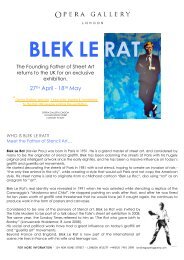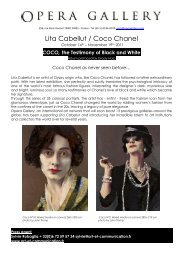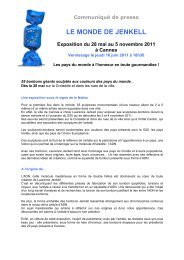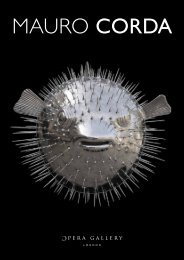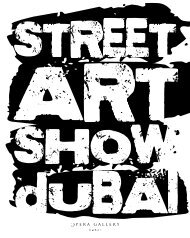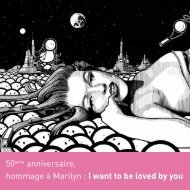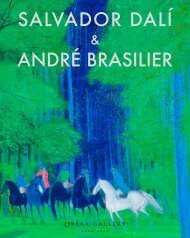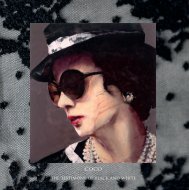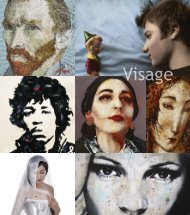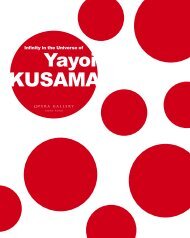Download catalogue - Opera Gallery
Download catalogue - Opera Gallery
Download catalogue - Opera Gallery
You also want an ePaper? Increase the reach of your titles
YUMPU automatically turns print PDFs into web optimized ePapers that Google loves.
Iranian art has undergone<br />
a significant transition<br />
over the last decade…<br />
…as shifts in cultural politics provoke a transformation that is both increasingly reflective and increasingly<br />
critical.<br />
No longer concerned with formalistic innovations derived from Western Art, a distinct sense of self questioning<br />
has opened wide windows onto identity and yielded a new visual language with which to explore it. Irony, satire,<br />
incongruity and subtle spins on the commonplace are being wryly manipulated into fractured comment as<br />
familiar and comfortable iconography is displaced into a new paradigm.<br />
A nascent movement known as “New Art” has injected a radical energy into the Iranian contemporary landscape, as a<br />
superbly subtle engagement with traditional motifs and powerful cultural symbols crystallizes into new angles<br />
of perception. Naturally for Iran, calligraphy, the veil and the chador were an immediate focus for reinterpretation<br />
as the “Contemporary” transitioned from a struggle to stay “in step and time with” Western art to “tuning into”<br />
a self generated and self referential modernity. A distinctly Iranian symbology is instantly recognizable, yet its<br />
use and the hints toward its reading have built toward a decisive shift in meaning. 19 th Century iconography is<br />
imposed with jarring incongruity onto a contemporary moment as acknowledgement and rejection wrestle into<br />
fresh flickers of volatile unity. Collective memory is invoked and bygone priorities are woven through splintered<br />
personal histories as Iranian art strives to reconcile its uneasy relationship to the Western tradition with its own<br />
roots and break through into individuality.<br />
The ubiquity of the familiar is offset by discordant notes as unpredictable juxtapositions unsettle the viewer into<br />
a probing reappraisal of that familiarity. In the work of Khosro Khosravi, the cloaked commentary on the<br />
futility of the chador literally lays bare prohibited areas. Hidden behind full veils Radaie’s 19 th Century costumed<br />
women speak to the “inability of people to determine their destinies”.<br />
Autobiographical narratives probe uneasy connections and fragile identities through jagged shards of broken<br />
memory. The mirrored fragments which pervade the work of Negar Varasteh are a deliberately warped looking<br />
glass into reality just as the recognizable landmarks of past eras co-exist yet conflict with their setting in the<br />
bank notes of Behnam Kamrani. Photographs, the most commonplace representation of collective memory are<br />
blinded or stare into the impenetrable narratives of Samira Alikhanzadeh and Bahman Jalali or take new vistas<br />
over the distant landscapes of Khosrow Hassanzadeh’s, or indeed shine an elusive light into Shima Esfandyari’s<br />
cultural consciousness.<br />
The national symbols that characterized the work of earlier artists such as Sadegh Tabrizi have been dislodged and<br />
replanted onto an “alien” landscape, and yet that “foreignness” is no longer the derivative of Western ideas but<br />
a mutation of Iran’s own cultural lexicon. Even at modernity’s peak, the intangible connection of the Iranian<br />
artist to his cultural context is undeniable. Through the cracking and peeling of Reza Derakhshani’s and distill<br />
of Mohammad Niazi’s cutting edge, an elusive nostalgia pervades. This duality of a culture in which nothing is<br />
as it seems, has given rise to unapologetic self exploration reveling in the double entendre and the allegorical.<br />
Emotional and psychological interaction with the viewer’s collective consciousness, twisted into incisive<br />
illusions and raw reflections are the common thread running through contemporary Iranian art. As it casts off<br />
the shackles of imported ideas and indigenous inertia through a progressive cycle of disintegration and resurrection,<br />
we are seeing a different dynamic of complexity and ambiguity fighting for a new understanding, a new<br />
sense and a new integrity of self.<br />
Zahra Faridany-Akhavan PhD<br />
24 25



